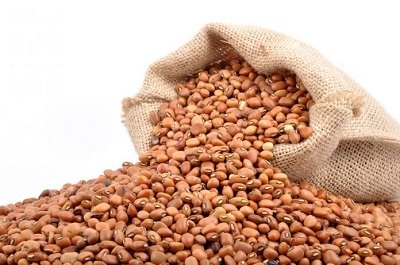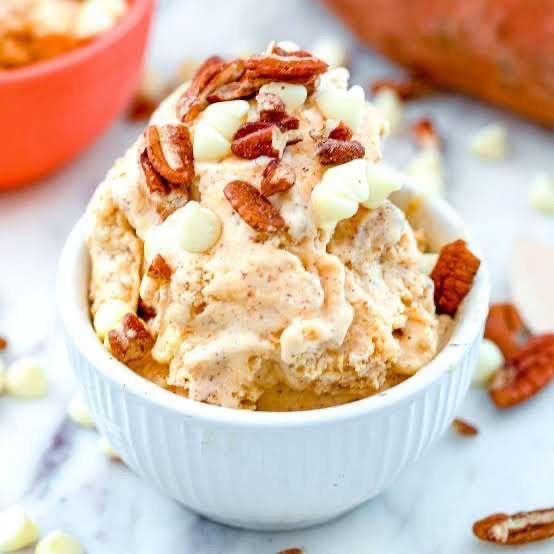Nutrition
Fact sheet about sweet potato, groundnut and cowpea in Ghana

It is interesting to note that:
- CRI-Vern Gracen, CRI-AGRA SP09, CRI-AGRA SP13 and CRI-Kofi Annan, all improved high-yielding, non-sweet sweet potatoes varieties, were released in 2017. They have staple taste, higher storage root yield, that is 19 to 39t/ha, sugar content is 14.47- 18.12 per cent, early-maturing (four to five months), and higher tolerance to the sweet potato virus (SPVD), sweet potato weevils (Cylas sp.) and alcidodes. They are suitable for all five eco zones in Ghana. The varieties can be used for fufu, French fries chunk[1]fried, ampesi (boiled/steamed), crispy chips, for bread and pastries, yoghurt, baby foods and juice gluten-free noodles. They are also potential enzyme source for breweries and other industries.
- WAAPP Piesa 1, Manga-moya, Maa-Lana, Naachem-Tiir and Nutsugah Piesa, all Frafra potato varieties, were released in 2017. Their ovoid tubers are up to eight centimetres in length. Besides, their raw tubers are exceptionally nutritious, resistant to diseases and pests. They mature from107 to 113 days. The varieties are applicable to Guinea Savanna, Sudan Savanna, Coastal Savanna and forest zones. They can be used for thick porridge, tuo-zaafi, amongst others.
- Sweet potato: CSIR-SA[1]RI Nan variety was released in 2018. This variety is resistant to diseases and pests, climate-smart, orange fleshed, high dry matter: 26-29.5 per cent, drought-tolerant and yields 24t/ha. It is suitable for Guinea and Sudan Savanna agro-ecological zones of Ghana. It can be used for thick porridge, tuo-zaafi, etc.
- Sweet potato: CSIR-SARI Diedi variety was released in 2018. It is purple fleshed, tolerant to SPVD, yields 14t/ha and drought-tolerant. Applicable to Guinea and Sudan Savanna agro-ecological zones of Ghana. It can be used for ampesi.
- Sweet potato: CSIR-SARI Nyumengre variety was released in 2018. It is white fleshed, resistant to diseases and pests, drought-tolerant and yields 16t/Ha. The variety is suitable for Guinea and Sudan Savanna agro-ecological zones of Ghana. It can be used for ampesi.
- Sweet potato: Micro-propagation protocol for the mass generation of planting material of sweet potato (Ipomoea batatas) variety. The protocol supports the production of planting material to address the inadequate supply of sweet potato vines and storage roots. The procedure eliminates disease-causing organisms, giving the resulting plant[1]lets more vigorous growth and increased yield. Use of the protocol/method generates pathogen-free material which prevents the transfer of diseases and pests from one point to the other and allows easy international exchange of sweet potato germplasm. The protocol can be a foundation for downstream research applications including genetic transformation activities. The variety is applicable to Guinea Sudan Savanna agro-ecological zones of Ghana. Advantages: Mass production of true-to-type disease-free planting material for existing and newly released varieties. Additionally, it enhances rapid international germplasm exchange (limited quarantine requirements)
- Munikpa groundnut variety was released in 2005. It matures in 90 days, yields 2.0 t/ha, kernels are of very large size, very high oil content (51.8 per cent) and moderately resistant to early and late leaf spot. Munikpa is suitable for Guinea Savanna ecology. Besides, it is suitable for oil production and confectionary products
- Kpanielli groundnut variety was released in 2005. It matures in 120 days, yields 2.4 t/ha, kernels are of very large size, very high oil content (51.8 per cent), suitable for commercial production and resistant to early and late leaf spot. Kpanielli is applicable to Guinea Savanna ecology. It can be used for confectionary trade, has better resistance to Cercospora disease, has good resistance to foliar diseases and it is dry season feed for livestock.
- Jusie Balin groundnut variety was released in 2005. It matures in 100 days, yield of 2.0 t/ha, oil content is 47 per cent. Jusie Balin is applicable to Guinea Savanna ecology. Has better resistance to Cercospora leaf spot disease. It is good field dormancy.
- Edorkpo-mu nikpa groundnut variety was released in 2005. It matures in 90 days, yield of 2.0 t/ha, yields between eight to 12 bags in half an acre. It is suitable for all agro ecological zones of Ghana. Edorkpo-mu[1]nikpa is resistant to Cercospora leaf spot diseases, it is good field dormancy and can delay harvesting up to 10 days without germinating.
- SARINUT 1 SARINUT 2 groundnut variety was released in 2019. It matures in 90 days, adaptable to climate change, high in protein and oil and yield between 8-12 bags/ half acre. It is applicable to Northern agro ecological zones of Ghana. Has a higher oil content of 51 per cent, resistant to Cercospora leaf spot diseases and can delay harvesting up to 14 days without germinating.
- Bawutawuta cowpea variety was released in 2008. It is resistant to striga, medium-to-late maturing, has high biomass, yields 3.0 t/ha, has erect plant stature with few runners and small leaves and matures in 69-75 days. Bawutawuta is suitable for Guinea and Sudan Savannah zones. It has resistance to striga and resistant to most insects and diseases.
- Songotra cowpea variety was released in 2008. It has erect plant stature with no vines and small leaves, matures in 62-65 days, majority of the pods are slightly above the canopy, seed shape is fairly round, the seed coat colour is creamy white and has potential yield of 2.0 t/ha. Songotra is applicable toSahel, Sudan and Savanna zones. It is highly resistant to striga. Besides, it is moderately resistant to most insects and diseases.
- Padi-tuya cowpea variety was released in 2008. It has erect plant stature with few vines and large thick leaves, matures in 64-67 days, seed shape is round to kidney shape and yield potential is 2.4 t/ha. Padi-tuya is suitable for Sahel, Sudan, Guinea Savanna zones and humid areas. It has short cooking time. Besides, it is moderately resistant to insects, diseases and striga. The per cent harvest in total yield (determinacy) is moderate (about 72 per cent).
- Zaayura Pali, Diffeele, Soo-Sima, Wang Kae and Kirk[1]house benga-1 cowpea varieties were released in 2016. They are resistant to cowpea aphid and striga. The varieties are adaptable over northern Ghana. They are good source of iron.
Source: Manual of Agricultural Technologies developed by
CSIR, MAG and MoFA
Page: 98-102, 54-56 & 48-49
Nutrition
Homemade white yam ice cream

Ingredients (serves about 6)
- 2 cups yam (peeled, chopped, and boiled until soft)
- 1 cup evaporated milk (or fresh milk)
- ½ cup condensed milk (for sweetness) – or replace with ½ cup sugar
- 1 teaspoonful of vanilla essence
- ½ teaspoonful of nutmeg (optional)
- A pinch of salt
Method
- Wash, peel yam and chop into cubes.
- Boil in water with a pinch of salt until very soft.
- Drain and let it cool slightly.
- In a blender, add the boiled yam, evaporated milk, condensed milk (or sugar), vanilla essence, and nutmeg.
- Blend until it becomes very smooth and creamy.
- Taste the mixture and adjust sweetness if needed (add a little more sugar or condensed milk).
- Pour the mixture into a clean bowl or container.
- Cover and place in a freezer.
- Every 30–40 minutes, take it out and stir with a fork or whisk to break ice crystals (repeat 3–4 times for creaminess).
- Freeze until firm (about 4–6 hours).
- Serve.
- Scoop into bowls or cones.
- Garnish with groundnut, chocolate syrup, or fruit if you like.
By Sarah Kwakye
Join our WhatsApp Channel now!
https://whatsapp.com/channel/0029VbBElzjInlqHhl1aTU27
Nutrition
Galamsey and Nutrition: Counting the real cost of Ghana’s gold rush

Illegal small-scale mining, or galamsey, has been branded as one of Ghana’s gravest environmental and economic threats. Successive governments have promised action, task forces have been deployed, and billions of cedis lost in revenue have been reported. Yet a deeper crisis is unfolding beneath the surface: a nutrition emergency directly linked to the destruction caused by galamsey.
Across mining belts in the Western, Ashanti, and Eastern regions, rivers that once sustained farming and fishing are contaminated with mercury and cyanide. Farmers say irrigation is impossible; fishermen say their nets return empty. Independent studies confirm that mercury levels in some rivers exceed World Health Organisation guidelines. The result is a sharp reduction in safe food production and an erosion of the very foundation of Ghana’s nutritional security.
The figures are sobering. Nationally, one in five children under five is stunted. Nearly half of women of reproductive age are anaemic. Child wasting remains at emergency levels in some districts. The destruction of fertile land and poisoning of water through galamsey only compound these problems. In some mining-affected districts, local health authorities report higher rates of undernutrition and anaemia than the national average.
Economists estimate that malnutrition already costs Ghana up to 6.4 per cent of its GDP each year in lost productivity, poor educational outcomes, and higher health expenditures. With agriculture compromised by galamsey, the bill is rising. Food inflation is being felt in urban markets, while rural households in mining areas are forced to survive on monotonous diets that lack the nutrients needed for growth and development.
The accountability gap is glaring. Ghana committed at the 2025 Nutrition for Growth Summit to invest $6 million annually in nutrition. Yet the same state resources continue to be drained by environmental damage, water treatment costs, and agricultural losses linked to galamsey. While authorities launch operations against illegal miners, enforcement remains inconsistent and politically fraught, raising questions about who benefits from the destruction.
Experts warn that without decisive action, galamsey will derail Ghana’s progress toward the Sustainable Development Goals, particularly those on zero hunger, good health, and climate action. “Every river poisoned is a food system destroyed, and Ghana cannot achieve food security while watching our land vanish,” says Dr Charity Binka, Executive Director, WOMEC.
The evidence is clear: galamsey is not just an environmental crime. It is a public health emergency and a development crisis. Addressing it requires more than rhetoric; it requires enforcement, transparency, and the political will to confront vested interests. Unless this happens, Ghana risks trading its children’s nutrition and future productivity for short-term gains in gold.
We therefore demand the activation of permanent inter-agency galamsey response teams with prosecutorial authority independent of political interference and the establishment of a Galamsey Restoration Fund financed through penalties for river remediation and emergency nutrition interventions. We also call for the publication of quarterly malnutrition data disaggregated by mining-affected districts.
We join the call for amendments to the Minerals and Mining Act with a focus on mandating nutrition impact assessments with automatic permit suspension for violations, the resourcing of community water monitoring committees with testing kits, and the invitation of UN Special Rapporteurs to assess affected regions and provide independent recommendations.
We urge every citizen to demand that their MP publicly declare their enforcement plan and support stronger penalties, because the evidence is overwhelming and the solutions are known. Ghana’s rivers, farmlands, and children cannot wait for another empty promise.
Feature Article by Women, Media and Change under its Nourish Ghana: Advocating for Increased Leadership to Combat Malnutrition Project
Join our WhatsApp Channel now!
https://whatsapp.com/channel/0029VbBElzjInlqHhl1aTU27







